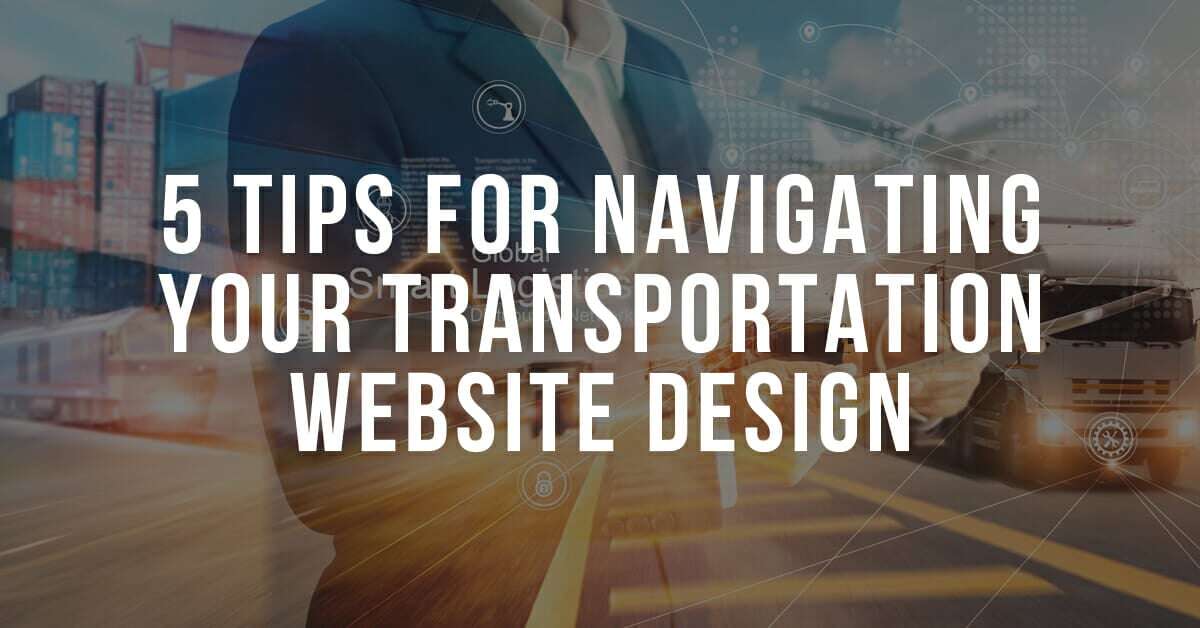3 min read
Things to Think About When Deciding On a Website Designer
According to the US Census Bureau, 14.3% of sales during the third quarter of 2020 were e-commerce sales, and it’s predicted that by 2023...
Improve customer satisfaction and increase operational efficiency with a client portal.
Take control of your operations with customized software solutions.
Help your in-house dev team get more done, faster with our Midwest-based experts.
Things move fast in the transportation industry. If you don’t keep up, your competition will leave you in the rearview mirror. Making sure your company has an exceptional website can keep you well ahead of your competition.
Whether you’re starting on a clean slate or polishing an established site, enhancing your web design is key to outpacing competition and keeping up with your business’s ever-increasing demands. As leaders in the field of custom website development, we’re firm believers in the power of a user-friendly, informative, and eye-catching online presence.
In this guide, we’ll share five keys to navigate your transportation website design.
Dive into the website design process armed with a strategic plan aligned with your goals and objectives. By defining your design goals and pondering over your customers’ expectations, you can craft a website that speaks volumes about your unique value proposition.
Consider these questions:
Website design is rooted in usability, allowing visitors to travel smoothly through your site. For transportation websites, concentrating on usability aspects that meet your audience’s specific needs is crucial. Keep in mind:
To secure a strong foothold in the digital realm, it’s important to adopt the latest features and technologies that boost your transportation website’s functionality. By keeping your finger on the pulse of website development trends, you can offer inventive solutions that satisfy your customers’ needs. Consider integrating features like:
Timely execution is the backbone of any website redesign project. To steer clear of drawn-out timelines, sketch out a realistic schedule and stick to it. Pinpoint aspects of your site that need revamping, refreshing, or removal, and set transparent milestones and deadlines. A well-established timeline preserves your current website’s functionality while facilitating a smooth transition to the updated version. By following the timeline, you sustain efficiency and keep your transportation business in high gear.
Incorporating eye-catching elements on your website is vital for making a memorable first impression. By adding relevant photos, brand elements, and graphics, you can craft a professional and visually cohesive website that resonates with your audience. When using stock photography, it is important to steer clear of unprofessional and overly used images. When visitors come across a photo that looks overly staged, unnatural, or unrelated to your brand, it creates a sense of disconnect. This could lead to your audience to view your brand as lacking authenticity and credibility.
In conclusion, designing an effective transportation website requires careful consideration of usability, incorporating new features and technologies, strategic planning, adhering to timelines, and enhancing visual appeal. By following these five tips, you can navigate the website design process with confidence, knowing that your transportation company will have a powerful online presence that attracts and engages potential clients.
At Onsharp, we specialize in custom website development solutions that are tailor-made to meet the unique needs of transportation businesses. Our expertise in creating user-friendly, visually appealing, and functional websites ensures that your online presence stands out from the competition. Let us partner with you to create a compelling online platform that drives success for your business.

3 min read
According to the US Census Bureau, 14.3% of sales during the third quarter of 2020 were e-commerce sales, and it’s predicted that by 2023...

2 min read
The look and feel of your website matters. It takes 0.05 seconds for users to make a first impression of your website. It’s essential that...

2 min read
Website design trends are constantly evolving. Companies across all sectors need to be proactive to keep their content from growing stale....
